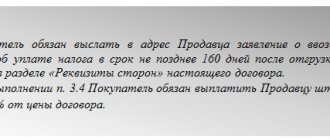Air transport is an integral part of the transport and logistics infrastructure of Russia, occupying 4th place in terms of traffic volume. In just 7 months of 2021, the total volume of freight transport by air amounted to more than 500 thousand tons. Air transportation of dangerous goods accounts for up to 10-15% of the total volume. The procedure for transporting dangerous goods (DG) on aircraft is regulated both by the international convention on air law - ICAO, and by Russian national transport legislation - the Air Code of the Russian Federation, its 84th chapter. This article will talk about the main regulations governing the transportation of dangerous goods by air, what falls into the DG category, and what documents are required to formalize such types of transportation on aircraft.
Concept and definition of dangerous goods when transported on aircraft
In the Air Code of the Russian Federation, hazardous substances are understood as solid and granular substances, liquids, goods, industrial products and equipment, due to which, when transported on an aircraft, a dangerous situation may arise, and significant damage to the aircraft, other cargo, passengers and crew may be caused.
How relevant the issue related to the transportation of goods by air, including those classified as dangerous goods, is, is shown by recent news. They relate to the fact that the well-known motor transport carrier in the Siberian region of the country, TK Baikal-Service, launched an end-to-end combined service for the delivery of dangerous goods in August 2021. At the same time, the delivery speed of combined routes, which includes delivery of cargo by van to the airport, loading on board an aircraft and delivery to its destination, is 4-5 times faster than the use of traditional logistics schemes by trucks or railway transport. The cost of transportation is only 230 rubles. more for every kg of cargo.
ATTENTION! We work only with legal entities.
There are four main types of exhaust gases used for classification in air transport:
- flammable materials that, under certain conditions, can lead to spontaneous combustion, explosion, or the release of significant thermal energy. This includes classes of substances of category 1, which include explosives, gunpowder, alcohol-containing substances, ethers and others. In particular, this group includes such types of products and goods as perfumes, alcoholic beverages, aerosol liquids that can spontaneously ignite when heated, gravitational overloads, or when pressure changes;
- materials, equipment containing radioactive elements that can lead to significant radioactive contamination, irradiation of cargo, passengers and crew;
- chemicals that, under certain conditions of air transportation, release toxic, toxic and harmful substances;
- substances and liquids that can, under various conditions, for example, depressurization of packaging, lead to the formation of corrosion and a negative impact on other cargo, as well as structural elements of the aircraft.
The classification of hazardous materials is reflected in detail in Appendix No. 18 to the Protocol of the ICAO Chicago Convention. This document provides for the classification of all exhaust gases for transportation into 9 main classes. There is also a list of substances and materials that are completely prohibited for transportation on an aircraft by any means.
Dangerous goods are completely prohibited for transportation by air
The list of substances and materials that are completely prohibited for air transportation, not only in the form of cargo, but under any circumstances, contains the following groups:
- explosives capable of self-ignition at temperatures above 75°C with an exposure period of no more than 48 hours;
- phosphorus-containing explosive mixtures;
- substances containing components of ammonium, chlorate and their derivatives;
- chemicals and explosives that are hypersensitive to mechanical shock and vibration;
- liquid materials capable of producing a strong chemical reaction with minor thermal or mechanical influence, leading to a sharp increase in pressure in the container, packaging and thermal release;
- gaseous substances that can, even with a slight change (difference) in atmospheric pressure, cause heating of the surfaces of the cylinders.
It should be especially noted here that the list of dangerous goods for air transportation is not closed or final. It should be checked periodically for updates and the addition of new substances, materials and equipment to the list of prohibited substances.
List of documents for obtaining permission
The list of documents for obtaining a certificate of admission is given in paragraph 23 of the regulations:
- Request (application, can be completed on the spot).
- Passport of a citizen of the Russian Federation or other identification document. For example, if the car owner is a child, then his birth certificate is provided.
- Parental consent if the applicant is between 14 and 18 years of age.
- A power of attorney or agreement, if a representative of the car owner applies to the traffic police.
- Tank type approval certificate (for tanks only).
- Certificate of testing and (or) inspection of the tank indicating the list of substances approved for transportation (for tanks only).
Note. Until January 1, 2022, certificates for tanks (from the last two points) are not required to be presented. This issue is discussed in detail in a separate article.
Please note that for all the listed documents, except your passport and application, you must also provide photocopies . The regulations do not address the issue of copying documents, so I recommend making copies in advance. Otherwise, you will have to copy documents near the traffic police, and this is usually quite expensive.
Documents required for registration of transportation of exhaust gas by air
In order to correctly register for transportation cargo that falls under the definition of “dangerous goods” when air transportation of dangerous goods is used (including multimodal types of transportation), a number of documents are required. These documents are the main ones; without them, it is impossible to admit cargo not only on board the aircraft, but also at the airport cargo terminal. The general list of documents, as well as the procedure for filling out and submitting them, is indicated in the following regulatory and legal documents:
- Order of the Federal Antimonopoly Service of Russia No. 372 of December 29, 1998;
- Air Code of the Russian Federation;
- international quality standard - ISO 9000.
This list includes the following required documents:
- “Declaration on the carriage of dangerous goods.” This document is in the form of a form on A4 sheets. In this declaration, the shipper or his agent (forwarding company) indicates all the exact information about the cargo - full name, including chemical or technical, number of packages, weight, packaging, hazard class. Also attached are technical passports for the cargo itself, its packaging or container. The declaration is filled out in triplicate.
When sending one consignment of cargo consisting of several types of exhaust gas, a separate declaration is filled out for each of them. - The second most important document for the transportation of exhaust gases on any type of aircraft is the “Cargo Safety Data Sheet” or MATERIAL SAFETY DATA SHEET (MSDS). This document is drawn up by the manufacturer and must be in the original form of the shipper.
Those. not a copy, but an original document, with the appropriate seal and signature of the responsible person (the head of the laboratory or the quality department of the enterprise). This document details the type and composition of the substance, material, parameters for its safe transportation, and precautions. An emergency card is also attached to the safety data sheet, which contains instructions on how to neutralize negative consequences - for example, how to extinguish a flammable substance, what types of fire extinguishers, what protective measures, antidotes. - Certificate of conformity for the transported substance or material and its packaging.
- Phytosanitary or hygienic certificate, if substances containing active plant, chemical or biological components are intended for transportation.
- Certificate of Origin or Certificate of Origin. This document contains all information about the manufacturer of the substance and equipment that is transported as exhaust gas.
- Packing list or document on packaging, exhaust gas mounting.
- A copy of the supply contract, purchase and sale, invoices and other documents according to which the commercial transportation of goods is carried out.
In addition to these basic documents, for the transportation of hazardous materials, the airline or its liner agent may require other additional documents from the shipper confirming the safety of transportation of hazardous materials on a specific aircraft or for acceptance for storage at the airport cargo terminals, including the customs area.
Deadline for issuing a certificate
20. The period for provision of public services is calculated from the moment of actual acceptance of the applicant’s request and documents necessary for the provision of public services, and should not exceed 180 minutes.
The certificate must be issued within 3 hours .
Note. Until January 10, 2021, the maximum period for issuing documents was one business day.
In addition, the regulations also establish maximum deadlines for various actions of the traffic police.
For example, when submitting documents, the driver must spend no more than 15 minutes in line.
Requirements for a car when obtaining a permit
The driver will be refused to issue documents in the following cases:
- Lack of technical inspection. There is no need to provide a diagnostic card to the traffic police, but the UAIS MOT must contain information that the car has successfully passed the inspection. If you wish, you can independently check the availability of technical inspection via the Internet.
- Making changes to the design of a vehicle without permission from the traffic police.
- Problems with car markings (body number, engine number, etc.).
Send a request and we will call you back promptly
Air transportation of dangerous goods is a challenging task even for experienced carriers. It is necessary to take into account international rules and Russian legislation, as well as by-laws and instructions relating to this category of cargo. Plus, transporting dangerous goods (DG) by plane means that it is necessary to take into account the specifics of delivery by aircraft. Therefore, you should apply for such a service exclusively to a logistics company that specializes in this service.
What regulations governs
The issue of safety when handling such cargo is a priority. Therefore, it is very important to be guided by the relevant regulations:
- International Convention on Air Law or ICAO.
- Air Code of the Russian Federation (Chapter 84).
- Regulations, rules and instructions of the International Air Transport Association (IATA).
There is a certain approach to determining the danger of cargo. According to general principles, cargo is considered dangerous if it poses a threat to humans or the environment, creates risks to health or life. However, when delivering cargo by air, it is necessary to be guided not by general definitions, but by what is specified in the Air Code of the Russian Federation.
The relevant regulatory act states that dangerous goods mean various substances, products and equipment that can provoke a dangerous situation on an aircraft during transportation and cause significant damage to other cargo, the aircraft, the crew and passengers. You need to be guided first of all by a special definition.
For how long is the certificate issued?
The certificate is issued for the period of validity of the technical inspection, but not more than six months from the date of its conduct. When issuing a certificate to replace a lost one or one that has become unusable, its validity period corresponds to the validity period of the previously issued certificate.
The maximum validity period of the permit is 6 months . However, this period cannot exceed the validity period of the technical inspection.
For example, if the next technical inspection is due in a month, then the certificate will be issued only for a month. Well, in a month you will have to contact the traffic police again to renew it.











